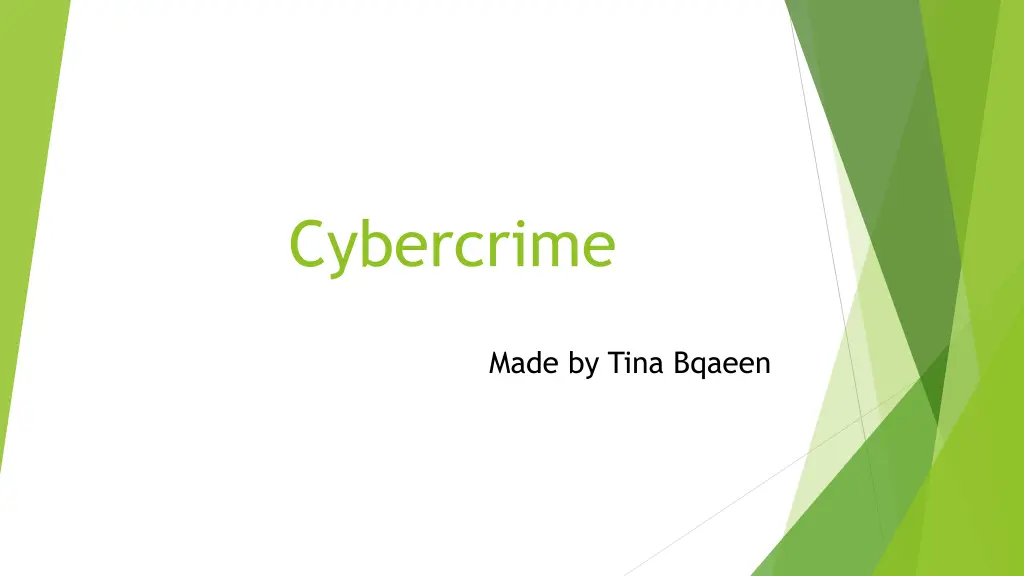
Understanding Cybercrime: Types, Prevention, and Protection
Learn about cybercrime, including phishing scams, identity theft, and hacking. Discover how cybercriminals operate and ways to protect yourself through strong passwords, software updates, and more.
Download Presentation

Please find below an Image/Link to download the presentation.
The content on the website is provided AS IS for your information and personal use only. It may not be sold, licensed, or shared on other websites without obtaining consent from the author. If you encounter any issues during the download, it is possible that the publisher has removed the file from their server.
You are allowed to download the files provided on this website for personal or commercial use, subject to the condition that they are used lawfully. All files are the property of their respective owners.
The content on the website is provided AS IS for your information and personal use only. It may not be sold, licensed, or shared on other websites without obtaining consent from the author.
E N D
Presentation Transcript
Cybercrime Made by Tina Bqaeen
What is a cybercrime Cybercrime is any criminal activity that involves a computer, networked device or a network.
Who is a cyber criminal cybercriminals are individuals or teams of people who use technology to commit malicious activities on digital systems or networks with the intention of stealing sensitive company information or personal data, and generating profit.
Types of cybercrime Phishing scams. Identity theft. Hacking.
Phishing scams A criminal creates a fake website that looks like the official website of a real bank or an internet shopping website. The criminal then writes a fake email that looks like it comes from the bank or shopping website. The email tells the person receiving the email that there is a problem with their account and they must log in the solve the problem. There is a link to their fake website. When the person logs in, the fake website records their username and password. The criminal can then use the person s login details to steal money.
Identity theft A criminal steals personal information such as a person s name and address. They also steal official information such as social security numbers or passport numbers. Criminal can use a stolen identity to pretend they are someone else. They can open a bank account or a credit card account in someone else's name. They then use these fake accounts to buy goods or to steal money from banks.
Hacking A criminal breaks into a computer system, usually to steal files or personal information. Hackers usually try to break into computer systems that hold a lot of personal information. Bank systems are an example of systems that hackers attack.
How can you protect yourself from cybercriminals Use strong passwords Keep your software updated Manage your social media settings Strengthen your home network Take measures to help protect yourself against identity theft
